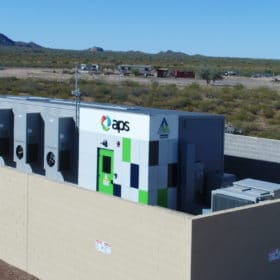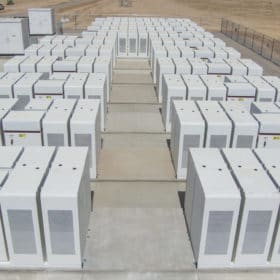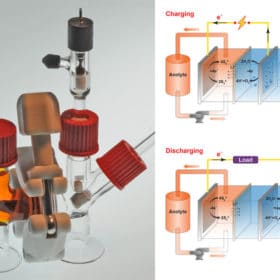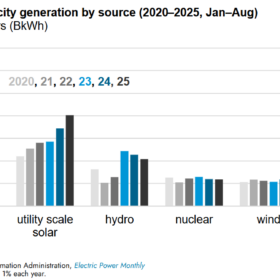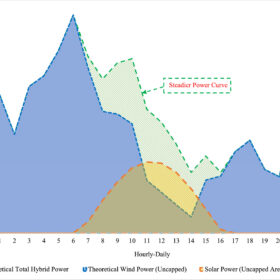MIT and NREL see solar modules reaching well below 20¢ per watt
Although, the author of this article sees a path below 15¢ per watt. Researchers at MIT, working with financial modeling teams at NREL, have projected the electrical losses and financial gains of thinning solar cells from the current 160 micrometers to 50 micrometers.
Ten research teams aim for long-duration storage at 5¢/kWh
To get long-duration storage costs down to 5 cents per kilowatt-hour, research teams funded by ARPA-E are pursuing breakthroughs in flow batteries, hydrogen storage and other technologies—even thermovoltaics.
MIT responds: batteries are critical to the future electric grid, but they have their limits
Recognizing their critical role in the future grid, MIT still sees limits to batteries in an intermittent renewable-dominated power sector. In this op-ed, John Reilly, co-director of the MIT Joint Program on the Science and Policy of Global Change, explains why.
MIT sees wind+solar going big, dreams of nuclear, forgets batteries exist
Researchers see wind and solar headed to over 40% of US electricity generation, even without major national policy. However, analysts project that beyond 40%, the intermittent nature of these sources will drive costs higher without nuclear power than with it.
The blackest black for more efficient solar cells
MIT scientists claim to have created a material 10 times more black than anything witnessed to date. It is said to be able to absorb more than 99.96% of incoming light and reflect 10 times less light than other superblack materials. The invention may be interesting for the development of black silicon PV technology and carbon nanotube-based solar cells.
‘New and strange properties’ provide a boost to energy storage
MIT scientists have developed a class of liquid electrolyte with properties they say could open up new possibilities for improving the performance and stability of lithium batteries and supercapacitors.
‘Turbocharging’ silicon PV: MIT scientists scratch the surface of singlet exciton fission
Scientists at the Massachusetts Institute of Technology have developed a device they say could “turbocharge” a single-junction silicon PV cell, pushing the technology beyond its theoretical limit to efficiencies of 35% and higher.
MIT works to refine the flow of promising perovskites
Scientists at the Massachusetts Institute of Technology have developed an accelerated process for screening new perovskite compounds as they search for those with the potential to be used in high efficiency solar cells. According to MIT, the process speeds up the synthesis and analysis of new compounds by a factor of ten and has already highlighted two sets of materials worthy of further study.
MIT identifies central role of deployment policies in PV cost reductions
A new study by Massachusetts Institute of Technology finds that from 1980 to 2012 government and private R&D was the biggest driver, and that policies to stimulate demand drove both private R&D and economies of scale.
MIT researchers develop ‘air breathing’ sulfur flow battery
A team at Massachusetts Institute of Technology has developed a type of battery which it says could store energy for long durations at a fraction of the cost of current storage technologies.

